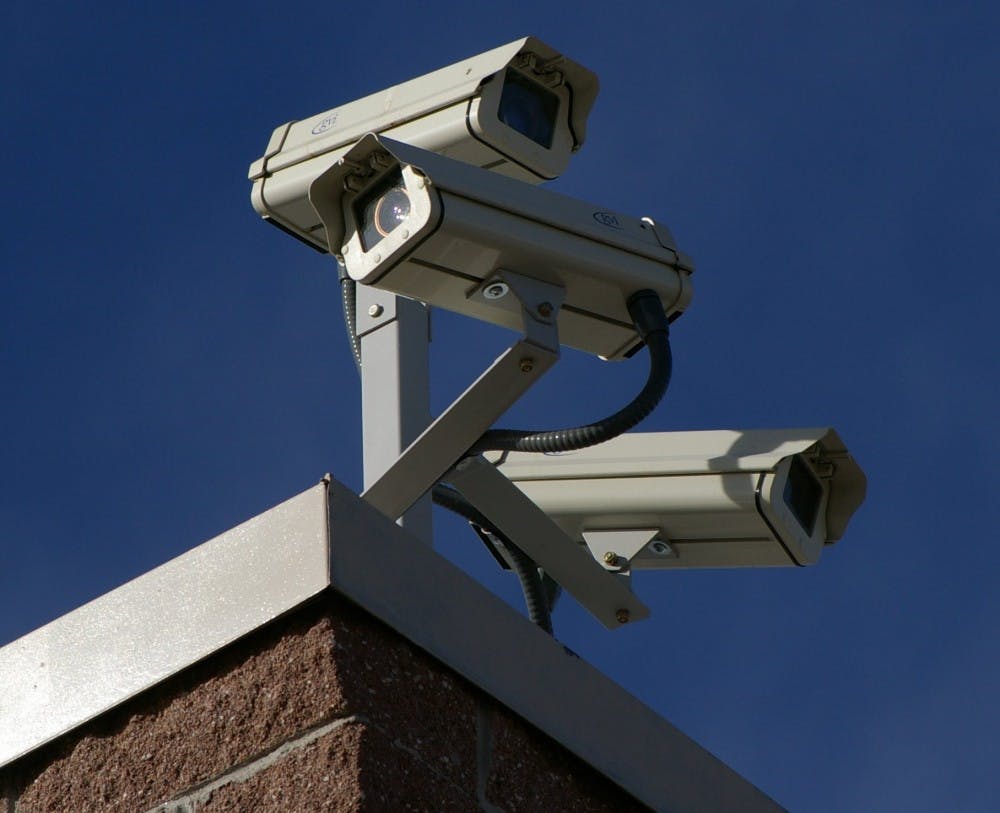“I fear the Greeks, even bearing gifts!” So (supposedly) spoke the Trojan priest Laocoon, urging against bringing a wooden horse into Troy. This phrase has persisted so long, I think, because it tells a basic truth about us: we often consider solutions to be clear and next steps to be obvious. All too often, we make declarations about what happens next, but do not have conversations about what that next step commits us to doing.
The year opened with the scrawling of a racial slur in the Mary Lou Williams Center. Over the weekend, someone defaced a Latinx Heritage Month Mural painted on the East Campus Bridge by Mi Gente. A homophobic threat in an East Campus dorm in 2015, another racial slur in 300 Swift last year: Duke has a problem. We want to see this problem fixed.
A common collective response to these incidents is to demand that the University “create and enforce a standardized set of consequences for acts of hate and bias on campus.” The thinking goes that such a policy will deter future acts of hate and bias.
Yet in our focus upon the creation of such a policy, we have overlooked the requirements of enforcing this policy. What is necessary for such a policy to be feasibly enforceable on our campus?
A hate and bias policy would be ineffective without a surveillance infrastructure large enough to identify culprits. A policy is no more than a paper tiger if it cannot be enforced against a violator. It’s a simple principle: you can’t bring a case without a culprit. The punishment that deters further malfeasance does not occur without someone to punish.
And how else would we find culprits in such incidents as these, unless we greatly increased passive surveillance on Duke’s campus? What these acts have in common—beyond a gross and cowardly hatefulness repugnant to even the least-formed notion of human decency—is that they occur when no one is watching. There were no cameras properly positioned in the Mary Lou or in 300 Swift to see who scrawled racial epithets there. It’s anyone’s guess whether the cameras near the East Campus bridge are recording.
Compare the use of security camera footage to quickly identify the suspect who allegedly inappropriately touched two female students last week.
What spaces does Duke monitor? The very public ones that are often filled with potential witnesses. We eat our meals under the watchful eyes of bug-eyed lenses. Should we pray in the Chapel, we’ll do so in the company of eight silent eyes. And should we need to get a book from the stacks, we won’t be able to walk from here to there without being recorded.
Perhaps Duke could expand its passive surveillance beyond cafés, a house of worship and private libraries to have some chance—however small—of knowing who did it.
We’ll approve of increased surveillance until we remember that most of these acts happen in student housing and common spaces. Your dorm is your home. Your common area is your living room. If having someone watch you in your home does not bother you, find a copy of “1984” and begin reading. More surveillance in these at-risk spaces means that your every coming and going is on the record. When you use the bathroom. What your study group is up to. How long that teary phone call home lasted. The argument you and a good friend just had. We think that surveillance is anathema to a just society, so how could we ever think that surveillance could make a better campus?
You may think that the end justifies the means: catching the guilty party justifies the unwarranted surveillance of the innocent majority—victims and bystanders alike. If that’s how you think, call the NSA, because they have an internship for you. If we think that a surveillance state violates our rights, could a surveillance school do any less?
So, I repeat my question: how much surveillance is necessary to make something like a hate and bias policy feasible? Is this a level of surveillance we want? Would we prefer that these acts happened less, or that we don’t spend four years under a watchful eye? Or what if the solution is something else entirely? Is there a means of preventing acts of hate and bias, whether by students’ self-regulation or some new joint effort by administrators and students alike, that doesn’t involve making Duke into a panopticon?
I don’t pretend to know how best we can prevent these acts in the future. I do know that we need to be discussing this question together, as a community. We should approach this question—what does good enforcement look like?—from the axiom of the classical Chinese philosopher Lao Tzu: “A good traveler has no fixed plans and is not intent on arriving.” We can’t assume we know the best way forward, and we need to be aware of what each path we consider could do to us as a community. I’ve outlined what this conversation could look like above. I offer no final opinion, because coming to a final opinion is something that communities do together. Those of us who aren’t the victims and first responders should lean into this conversation and work with those affected to find a way forward. Or we can sit back and say, “too bad!” when this happens next.
A policy without fair and feasible enforcement is no more than empty words—and we all know how Duke students feel about empty words. Let’s start this conversation.
Tim Kowalczyk is a Trinity senior. His column runs on alternate Wednesdays.
Get The Chronicle straight to your inbox
Signup for our weekly newsletter. Cancel at any time.
Tim Kowalczyk is a Trinity sophomore. His column, "the academy matters," runs on alternate Thursdays.

